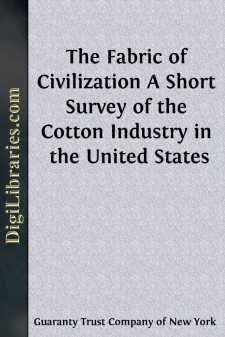Categories
- Antiques & Collectibles 13
- Architecture 36
- Art 48
- Bibles 22
- Biography & Autobiography 813
- Body, Mind & Spirit 142
- Business & Economics 28
- Children's Books 15
- Children's Fiction 12
- Computers 4
- Cooking 94
- Crafts & Hobbies 4
- Drama 346
- Education 46
- Family & Relationships 57
- Fiction 11828
- Games 19
- Gardening 17
- Health & Fitness 34
- History 1377
- House & Home 1
- Humor 147
- Juvenile Fiction 1873
- Juvenile Nonfiction 202
- Language Arts & Disciplines 88
- Law 16
- Literary Collections 686
- Literary Criticism 179
- Mathematics 13
- Medical 41
- Music 40
- Nature 179
- Non-Classifiable 1768
- Performing Arts 7
- Periodicals 1453
- Philosophy 64
- Photography 2
- Poetry 896
- Political Science 203
- Psychology 42
- Reference 154
- Religion 513
- Science 126
- Self-Help 84
- Social Science 81
- Sports & Recreation 34
- Study Aids 3
- Technology & Engineering 59
- Transportation 23
- Travel 463
- True Crime 29
The Fabric of Civilization A Short Survey of the Cotton Industry in the United States
Categories:
Description:
Excerpt
CHAPTER I
The Importance and Power of Cotton
COTTON is the fabric of civilization. It has built up peoples, and has riven them apart. It has brought to the world vast and permanent wealth. It has enlisted the vision of statesmen, the genius of inventors, the courage of pioneers, the forcefulness of manufacturers, the initiative of merchants and shipbuilders, and the patient toil of many millions.
A whole library could be written on the economic aspects of cotton alone. It could be told in detail, how and why the domination of the field of its manufacture passed from India to Spain, to Holland, and finally to England, which now shares it chiefly with the United States. The interdependence of nations which it has brought about has been the subject of numerous books and articles.
Genius that Served
The World’s Need
Nor is the history of the inventions which have made possible to-day’s great production of cotton fabrics less impressive. From the unnamed Hindu genius of pre-Alexandrian days, through Arkwright and Eli Whitney, down to Jacquard and Northrop, the tale of cotton manufacture is a series of romances and tragedies, any one of which would be a story worth telling in detail. Yet, here is a work that is by no means finished. Great inventors who will apply their genius to the improvement of cotton growing and manufacture are still to be born.
The present purpose, however, is to explain, as briefly as may be, the growth of the cotton industry of the United States, in its more important branches, and to endeavor, on the basis of recognized authority, to indicate its position in relation to the cotton industries of the remainder of the world.
America the Chief
Source of Raw Material
For the present, and for the future, as far as that may be seen, the United States will have to continue to supply the greater part of the world’s raw cotton. Staples of unusual length and strength have been grown in some foreign regions, and short and inferior fibers have come from still others. But the cotton belt of the Southern States, producing millions of bales, is the chief source of supply for all the world.
The following table, taken from "The World’s Cotton Crops, 1915," by J. A. Todd, gives the comparative production of the great cotton-growing areas, for the 1914-1915 season:
America 16,500,000 bales of pounds India 5,000,000 " " " Egypt 1,300,000 " " " Russia 1,300,000 " " " China 4,000,000 " " " Others 1,300,000 " " " ----------- Total 29,400,000 " " "The American crop is thus approximately fifty-six per cent. of the world’s total. The other producing countries have shown since the beginning of the century an interesting, if not a remarkable growth, that of China being the largest in quantity, and that of Russia, the largest in proportion....


